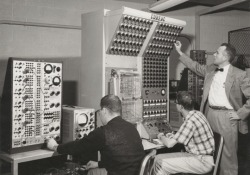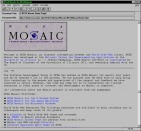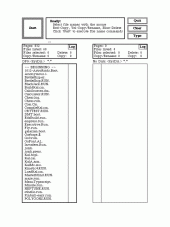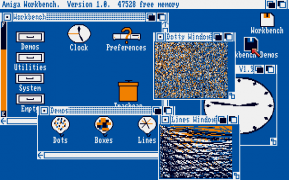History of the Internet
Paragraph.
Start of the Internet

Early computers in the 1960s
Modern Internet is the most widely used method for social, commercial, even academic communication. The Internet is a fairly young tool, which has grown vastly in sophistication since its inception. The 1960s marked the start data transference between computers using telephone lines. At this time, not even computers, let alone the infantile Internet, had reached a level of popularity, which may be comparable to its widespread utility today. In fact, the Internet was primarily used as data transference simply between scientists and military personnel. It took several decades for the computer to become a more popular piece of equipment, and for the Internet to be introduced as a possible mode of communication for any computer owner with access to a modem and a telephone line.
The Internet's Growing Popularity

Screen shot of Mosaic
By the 1990s, computers grew in popularity and advancements were made to create a more accessible Internet. In April of 1993, The National Center for Supercomputing Applications (NCSA) released the product responsible for the popularization of the World Wide Web and the Internet. Mosaic, one of the earliest developed web browsers, featured the most easily understood user interface known to date, an aspect which allowed for more users to take advantage of the Internet. Mosaic led to the “internet boom” of the 1990s, the growth in popularity of the Internet. The first year alone allowed for millions of Mosaic users to access basic documents through the Internet.
Modern Internet
Because the Internet at this time relied on dial up modems, early websites, such as those featured on Mosaic, lacked the sophistication of our websites today. The time consuming process of transferring documents using a dial up connection set limits to the documents being sent. Files being transferred were designed with the same computer language in use today, hypertext markup language (HTML), although, these files consisted primarily of text with minimal graphics.
Over time, web design evolved. By strengthening the coding language HTML, websites developed color and were capable of featuring animated images. These advancements ultimately led to the development of techniques such as XML, JavaScript, and Flash. These new advancements provides the possibility of more unique websites, which may include interactive elements, videos, even games, although this level of sophistication requires the designer to understand the more complicated code which composes the website.
Over time, web design evolved. By strengthening the coding language HTML, websites developed color and were capable of featuring animated images. These advancements ultimately led to the development of techniques such as XML, JavaScript, and Flash. These new advancements provides the possibility of more unique websites, which may include interactive elements, videos, even games, although this level of sophistication requires the designer to understand the more complicated code which composes the website.


